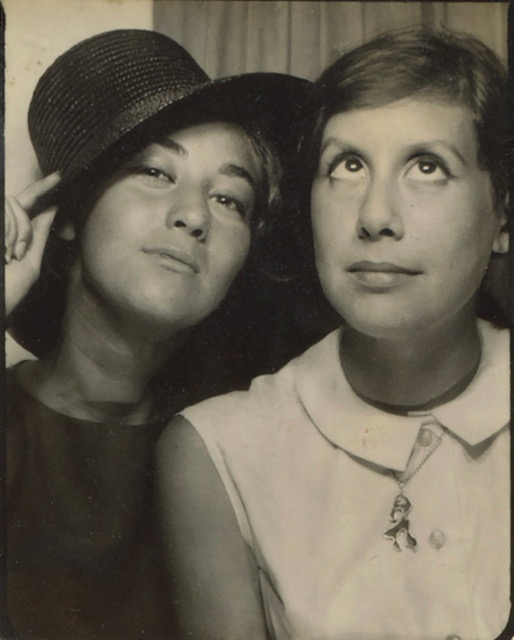In the small crowd at the Alzheimer’s fundraiser, I spotted Frederick, who attended one of the support groups I lead. I went over to say hello. He was with his wife, whom I had not met before.
After greeting me, Frederick said, “This is my wife, Sarah. She doesn’t know anything.” Sarah looked at me with a fixed smile, but there was clearly pain in her eyes.
I knew that Frederick was in pain too. In his mind, the wife he had so admired as a capable and giving person was changing in front of him, changing into a strange “other” whose behavior baffled him.
Once we begin to think of someone as “other,” we begin to treat them differently. For instance, we can assume they aren’t aware of what we’re saying in front of them, as Frederick did. We may even imagine they can’t be humiliated.
Unfortunately, underestimating the abilities and sensibilities of people with cognitive disorders is all too common. As soon as we hear that people have been diagnosed with Alzheimer’s disease, we position them differently—in the social world, the work world, and even in our families.
If an undiagnosed man has a minor accident with a power tool, well, it’s just an accident. If a man who has been labeled with Alzheimer’s has the same accident, it’s “No more power tools for you!”
That’s a judgment based, not on his actual abilities, but on the label, “Alzheimer’s,” and a consequent, exaggerated view of his deficits. That’s negative positioning.
It can lead us to write off the behavior of people with dementia as meaningless, merely a symptom of their disease.
Cameron Camp, a psychologist who researches dementia interventions, tells a story from his days as an applied researcher at a nursing home. A woman at the home would toss her orange juice at the servers when they came to clear the table after breakfast. The servers came to him to complain about it.
“Why does she do that?” he asked them. Their answer: “Because she has Alzheimer’s.” He rebuked them: “That’s never the right answer.”
He looked into it further. It turned out the woman was Russian and spoke no English. When the servers came to clear the table, they asked her if she was finished, but she couldn’t understand what they were saying and didn’t answer. She wasn’t finished eating, however, so when they proceeded to take her plate, she threw her orange juice at them.
Camp solved the problem by teaching the servers to say in Russian, “Are you finished?” and “Thank you,” and to recognize da and nyet (“yes” and “no”). In addition, he posted signs with the Russian phrases spelled phonetically so that everyone could see and use them.
Anger displayed by people with dementia often gets labeled “irrational hostility” or “a symptom of their dementia” when it is, in fact, righteous indignation at the way they are being treated.
People living with dementia act and speak with intention. We can often understand what they mean to communicate if we try. But if we believe they lack the capacity to have intentions, we’re not likely to try. When they have trouble finding words to express their thoughts, they are vulnerable to the interpretation that they have no thoughts. They are then at the mercy of those who underrate them in that way.
One woman told her support group, “When I go visit my mom at the nursing home, as soon as she starts speaking ‘word salad’ [garbled speech], I get up and go.”
People with dementia can be uncomfortably aware of how others respond to their garbled words. Neuropsychologist Steven Sabat repeatedly observed a woman who seemed to fit the dementia stereotype of the aimless wanderer. She often walked the corridors of her day care center at a particular time of day. Sabat concluded that she did it to avoid participating in a discussion group that would have highlighted her speech impairments and humiliated her.
“Therefore,” says Sabat, “instead of the ‘irrational wanderer,’…we have behavior which reflects [her] grasp of the social situation, the rational decision to avoid embarrassment, and the desire to take a walk instead.”
Not aimless wandering but a fully intentional act.
Sabat, professor emeritus of psychology at Georgetown University, has dedicated his career to understanding people with Alzheimer’s. He overturns many stereotypes in his moving book, The Experience of Alzheimer’s: Through the Tangled Veil, reporting in detail his painstaking and intensely revealing conversations with people with the disease, some of whom have severe language impairments.
I regard Sabat as a genius for his ability to decipher the sometimes fractured communication of people with Alzheimer’s. He does it through deep caring and complete attention to the person in exchanges like that below.
Sabat and the woman he calls Dr. M. were at the end of a particularly fruitful session in which he had boosted her self-confidence by encouraging her to re-engage in a valued project with her husband’s help.
Dr. M: Um, I’m not the fir, the first, the real person that came out when you, before when you
Sabat: first
Dr. M: came on this day, is different.
Sabat takes her comment to mean, “I’m a different person than the one who greeted you when you first came today.” And she confirms that.
He regularly uncovers astonishingly intact cognition and feelings that, because of speech problems and attention deficits, don’t readily emerge unassisted.
In conversation with Dr. M, Sabat says at one point, “I understood what you meant.”
She replies, “Ya, but there aren’t many yous…”
Would that we were all Steven Sabats, with extraordinary sensibility, passion and understanding, to connect with and draw out people with Alzheimer’s.
But Sabat shows us the way. Once we understand that people with dementia still have apt thoughts and feelings, even though they struggle to express them, we see them differently. Because connecting with them seems much more important, it becomes easier to pay close attention and help them communicate what otherwise remains thwarted.
Maggie Sullivan has come to know Alzheimer’s intimately. She was caregiver and advocate during the eight years her mother lived with the disease. For the past 30 years, she has facilitated caregiver support groups for the Alzheimer’s Association, learning from the experience of more than 300 members of those groups. The opinions she expresses here are her own. Maggie is also a writer whose essays and articles have appeared in the New York Times and elsewhere.



